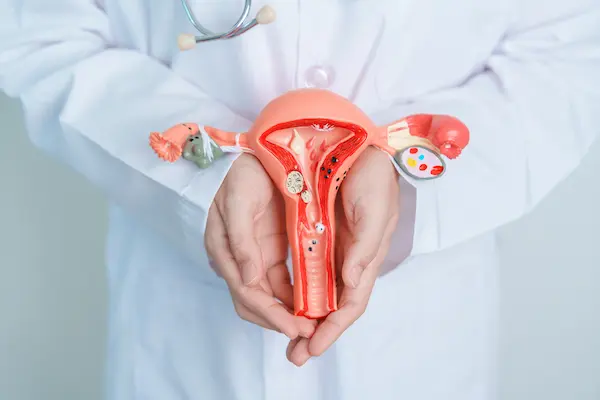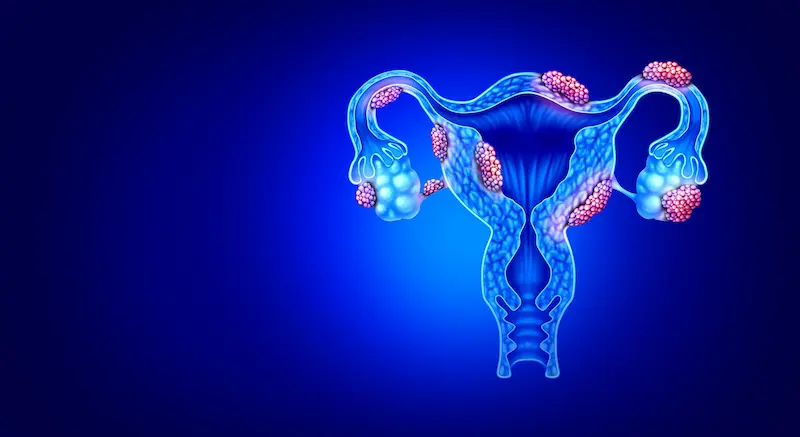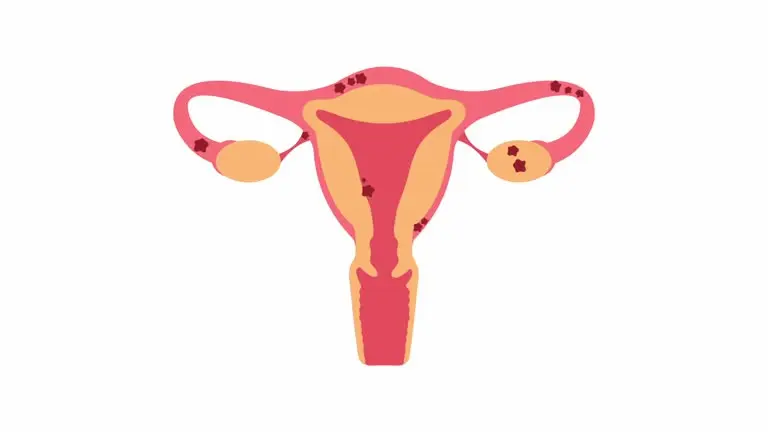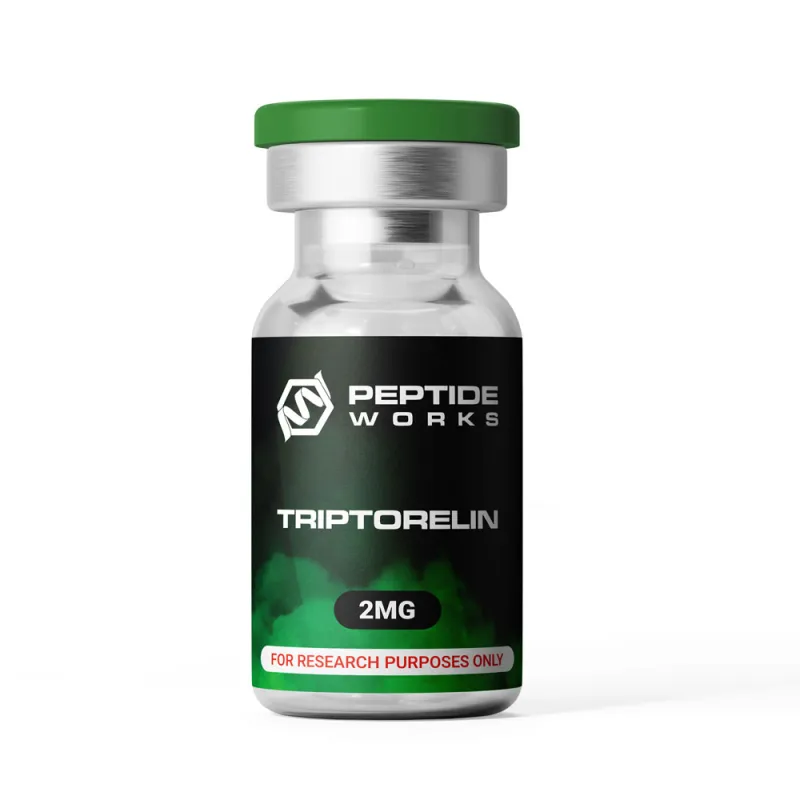
PROMO!
First order? Get 10% OFF with this code: 1storder
Written by

Endometriosis is a chronic condition where tissue similar to the uterine lining grows outside the uterus. It often leads to pain, heavy bleeding, and fertility problems. While standard treatments such as surgery or hormone therapy may bring short-term relief, their limits have led to growing interest in Endometriosis Peptide Therapy as a research focus.
This challenge has led researchers to study peptides as new tools in reproductive health research. Among these, Triptorelin, a well-known GnRH agonist, has gained attention for its role in regulating hormone activity linked to endometriosis. Some studies suggest that it may reduce estrogen levels, alleviate pain, and shrink lesions. Because of these effects, Triptorelin is now being explored within the broader field of peptide-based therapies for endometriosis research.
To understand Triptorelin’s role in Endometriosis Peptide Therapy, researchers first look at how it changes hormone activity in the body.
Explore Triptorelin from Peptide Works, a GnRH agonist studied for its role in hormone regulation and peptide-based endometriosis research.

Triptorelin works through the hypothalamic-pituitary-gonadal axis. At first, it triggers GnRH receptors in the pituitary gland, which causes a short rise in LH and FSH levels. This brief surge, known as the flare effect, can increase estrogen for a short time. With continued use, Triptorelin makes the receptors less responsive, forcing the pituitary to release much lower amounts of LH and FSH.
When LH and FSH fall, the ovaries produce less estradiol, the main form of estrogen. In Endometriosis Peptide Therapy studies, this drop limits hormonal signals that feed endometriotic lesions. Studies show estradiol levels can fall to near postmenopausal range within 4–6 weeks of therapy, which helps explain why Triptorelin remains important in reproductive health research.
This hormone shift also sets the stage for what researchers call the flare effect.
In the first phase of therapy, Triptorelin stimulates hormone release before switching to suppression. This surge in luteinizing hormone (LH) and follicle-stimulating hormone (FSH) is short-lived but central to how the peptide functions.
What makes the flare effect important in Endometriosis Peptide Therapy research is not only the temporary spike but also the transition it creates. Researchers often examine how quickly suppression follows, since the balance between these two stages can shape early outcomes.
Understanding the flare process also means looking at how long it continues before suppression fully takes control.

Most research notes that the flare phase is brief, typically lasting several days to about two weeks before suppression takes over. During this time, symptoms may feel more pronounced, but the window is limited.
By identifying the timeline, researchers avoid mistaking short-term reactions for treatment failure. Tracking duration enables studies to distinguish between flare-related changes and the long-term effects that emerge once suppression is established.
Since timing is only one part of the picture, researchers also examine how the flare phase affects pain levels during this early stage.
Flare-related changes can influence how pain presents in the early weeks of therapy. Some trials report stronger pelvic cramps, heavier bleeding, or increased discomfort while estrogen remains temporarily elevated.
As suppression develops, these symptoms usually ease. By isolating flare-related pain, researchers in Endometriosis Peptide Therapy can better evaluate how much discomfort belongs to the short surge and how much improvement occurs once hormone control is stable.
Beyond flare-related pain, researchers have also investigated how Triptorelin affects different types of pain linked to endometriosis.

In peptide therapy research for endometriosis, Triptorelin has been studied for its impact on different pain types rather than one symptom alone. Research shows that menstrual pain (dysmenorrhea) often improves first, with some trials noting relief within the first 4–8 weeks. Chronic pelvic pain and ovulation pain also show positive changes, though the timeline for relief can vary. These differences highlight the role of symptom variation in how researchers measure treatment outcomes.
Dyspareunia, or pain during intercourse, tends to respond more slowly, but reports still document improvement over time. Tracking multiple pain categories helps studies present a fuller view of treatment response. This makes Triptorelin a key subject in long-term Endometriosis Peptide Therapy studies.
Pain response is only part of the picture. Another focus in research is how long Triptorelin therapy is maintained.
In clinical research, Triptorelin is often used for limited cycles rather than indefinite therapy. Most studies explore treatment periods of three to six months, sometimes extending up to one year under controlled monitoring. Researchers limit duration because prolonged estrogen suppression can lead to side effects such as hot flushes, vaginal dryness, and bone mineral density loss.
Follow-up studies show that symptoms often return once therapy stops, which is why investigators track both treatment length and post-treatment outcomes. In Endometriosis Peptide Therapy research, the focus is not only on how long Triptorelin is given but also on how lasting the relief remains after discontinuation.
These observations have shaped how experts think about the future role of peptide-based approaches.
The future of Endometriosis Peptide Therapy lies in deeper exploration of peptides like Triptorelin and how they influence hormone activity, flare response, and symptom relief. While more research is needed, these studies continue to expand understanding of reproductive health and potential therapeutic pathways.
These insights not only guide scientific studies but also highlight the need for reliable research tools that enable accurate and consistent results.
At Peptide Works, we support researchers worldwide by delivering high-quality peptides for laboratory use. Our goal is to provide reliable materials that advance scientific discovery. With ongoing investigation, peptide-based therapies for endometriosis may open new possibilities in managing complex conditions such as endometriosis.
All products discussed are supplied for research purposes only and are not intended for human use.
[1] Saleh FL, Taylor HS. Clinical applications of gonadotropin-releasing hormone analogues: a broad impact on reproductive medicine. F S Rep. 2023 Feb 2;4(2 Suppl):83-87.
[2] Choktanasiri W, Boonkasemsanti W, Sittisomwong T, Kunathikom S,et al. Long-acting triptorelin for the treatment of endometriosis. Int J Gynaecol Obstet. 1996 Sep;54(3):237-43.
[3] Zhu L, Guan Z, Huang Y, Hua K,et al. The efficacy and safety of triptorelin-therapy following conservative surgery for deep infiltrating endometriosis: A multicenter, prospective, non-interventional study in China. Medicine (Baltimore). 2022 Feb 4;101(5):e28766.
ALL CONTENT AND PRODUCT INFORMATION AVAILABLE ON THIS WEBSITE IS FOR EDUCATIONAL PURPOSES ONLY.
DISCLAIMER: These products are intended solely as a research chemical only. This classification allows for their use only for research development and laboratory studies. The information available on our Peptide Works website: https://peptide-works.com/ is provided for educational purposes only. These products are not for human or animal use or consumption in any manner. Handling of these products should be limited to suitably qualified professionals. They are not to be classified as a drug, food, cosmetic, or medicinal product and must not be mislabelled or used as such.
Peptide Works
Related Articles

How effective could Orexin Addiction Therapy be?
Have you ever wondered why some people find it so hard to stop addictive habits, even when they truly want

Can NAD Therapy Improve Cognitive Performance?
NAD Therapy is gaining attention in research for its possible role in brain health. NAD+ (nicotinamide adenine dinucleotide) is a

Enhancing Energy with NAD+ Supplements
Energy is the driving force behind focus, movement, and recovery. When cells have less energy to work with, the body